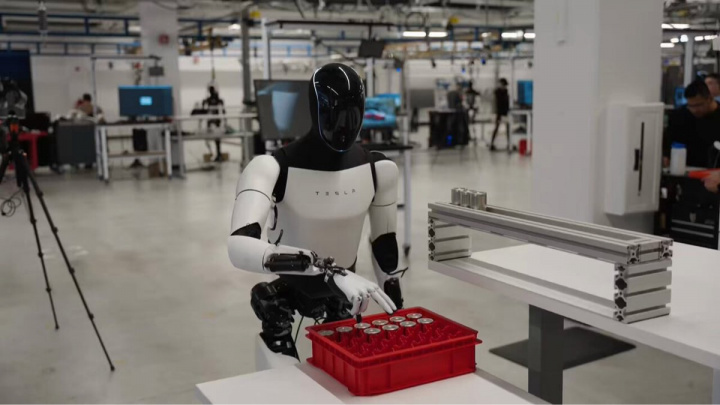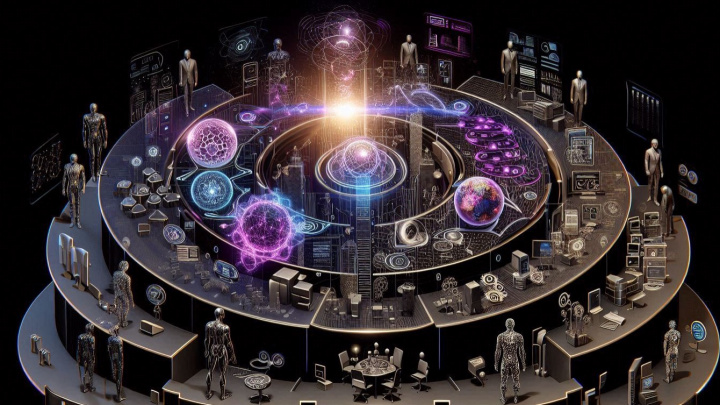The Quantum Zeno Effect: How Observation Can Halt Quantum Evolution
Imagine an unusual kind of hourglass – one that momentarily stops flowing the instant you glance at it, only to resume when you look away. This peculiar thought experiment bears a resemblance to a real phenomenon physicists call the Quantum Zeno Effect (QZE). It describes how frequent measurements can effectively "freeze" a quantum system in a particular state by repeatedly collapsing its wave function, thereby inhibiting its natural evolution or decay. But what does this counter-intuitive effect truly entail, and why does it captivate scientists?
.jpg)
What is the Quantum Zeno Effect?
Named after the ancient Greek philosopher Zeno of Elea, whose paradoxes challenged the concepts of motion and plurality, the Quantum Zeno Effect was formally described and named by physicists Baidyanath Misra and George Sudarshan in their influential 1977 paper. While the idea that observation impacts quantum systems dates back to the foundations of quantum mechanics (e.g., discussions by pioneers like John von Neumann), Misra and Sudarshan provided the rigorous mathematical framework demonstrating how sufficiently frequent measurements can prevent a quantum state from changing. Since the 1990s, this effect has been experimentally confirmed, revealing significant implications for technology and potentially for understanding biological processes.
The Basic Principle Explained:
Let's try a simple analogy, keeping in mind that quantum mechanics often defies direct comparison. Imagine a microscopic 'spinner' representing a quantum particle's property, like its spin. In the quantum world, before measurement, this spinner might exist in a superposition – effectively spinning both 'up' and 'down' simultaneously. However, the moment you perform a measurement to determine its spin, the superposition collapses, and the spinner "chooses" a definite state (either up or down). Now, if you perform such measurements extremely rapidly, one after another, you repeatedly force the spinner back into that specific measured state before it has a chance to evolve into a different one. The result is that the spinner appears "frozen" or stuck in the state you keep measuring.
This is the core idea of the Quantum Zeno Effect: frequent observation, acting as repeated measurements, inhibits the natural time evolution of a quantum system away from the measured state.
Historical Background and Experimental Evidence
The journey of the Quantum Zeno Effect from theoretical prediction to experimental verification highlights the fascinating nature of quantum inquiry:
- 1977: Baidyanath Misra and George Sudarshan publish "The Zeno’s paradox in quantum theory," formally describing how continuous observation (modeled as infinitely frequent measurements) can prevent an unstable particle from decaying.
- 1990: The landmark experimental demonstration is performed by David Wineland, Wayne Itano, and their team at NIST. They used laser-cooled Beryllium ions trapped in an electromagnetic field. By applying frequent, short pulses of resonant laser light (acting as measurements), they successfully inhibited the ions' transitions between two energy levels, directly observing the Zeno effect.
- Further Confirmations: Since then, numerous experiments have confirmed and explored the QZE in various systems:
- Observing inhibited transitions in atomic energy levels using different techniques.
- Slowing down quantum tunneling – the process where a particle passes through an energy barrier it classically shouldn't be able to overcome (important in phenomena like nuclear fusion and radioactive decay).
- For example, a Cornell University group demonstrated the reduction of atomic tunneling in an ultracold gas by frequently imaging the atoms with a laser.
- The Anti-Zeno Effect: Interestingly, subsequent research revealed the flip side: the Anti-Zeno Effect (sometimes called the Quantum Turing Paradox in reference to Alan Turing's related thoughts). Under certain conditions, frequent interactions or measurements can *accelerate* a system's evolution or decay, rather than inhibiting it. This highlights the complex relationship between a quantum system, its environment, and the nature of measurement.
These experiments not only validated the core theoretical predictions but also opened new avenues for manipulating quantum systems and exploring the nuances of quantum measurement.
Implications in Technology and Biology
The Quantum Zeno Effect and its counterpart are not just theoretical curiosities; they offer potential pathways for technological advancement and shed light on natural processes:
Quantum Computing
Building a stable quantum computer is like trying to construct an intricate sandcastle during a rising tide – environmental noise and interactions constantly threaten to destroy the delicate quantum states (qubits). The QZE offers a potential strategy, loosely analogous to constantly reinforcing the sandcastle walls against the waves.
By carefully applying measurements or engineered interactions, the QZE could potentially be used to:
- Extend the coherence time of qubits – the duration they maintain their fragile quantum states before decohering due to environmental interactions.
- Suppress certain types of errors in quantum computations by keeping qubits "pinned" to their correct states.
- This could contribute to building more fault-tolerant quantum computers and enabling more complex quantum information processing tasks.
Biology
Intriguingly, quantum effects, potentially including the QZE or related mechanisms, might play functional roles in biological systems:
- Avian Magnetoreception: How do birds navigate using Earth's magnetic field? One leading hypothesis involves magnetically sensitive chemical reactions in birds' eyes creating radical pairs with specific quantum spin states. Some researchers speculate that interactions within the biological environment might act like frequent "measurements," potentially utilizing a Zeno-like effect to sustain the necessary quantum coherence of these spin states long enough for the bird to sense direction.
- Quantum Biology Fundamentals: More broadly, the QZE framework helps explore how quantum coherence might persist in the "warm, wet, and noisy" environment of living cells long enough to influence biological functions (e.g., in photosynthesis or enzyme action). Understanding these dynamics remains a major challenge at the intersection of physics and biology.
These lines of inquiry could inspire new biomimetic technologies and deepen our fundamental understanding of life's molecular machinery.
Theoretical Interpretations
The Quantum Zeno Effect touches upon the fundamental mystery of measurement in quantum mechanics, leading to different perspectives depending on the chosen interpretation:
- Copenhagen Interpretation: Often visualized as measurement causing an abrupt "collapse" of the wave function. Think of the quantum world as an improvisational play where actors embody all possibilities simultaneously. A measurement (the audience looking) forces an actor into a single, definite role. Frequent glances keep forcing the actor back into that same role, preventing them from switching.
- Many-Worlds Interpretation: Here, measurement doesn't cause collapse but rather a splitting of the universe into parallel branches, each corresponding to a possible outcome. The QZE, in this view, means that with each frequent measurement, the observer follows the branch where the system remains in the measured state, giving the *appearance* of frozen evolution within that specific branch of reality.
- Decoherence Theory: This approach emphasizes the role of the environment. A quantum system constantly interacts with its surroundings, leading to the loss of its quantum coherence (decoherence), making it appear classical. Frequent measurements can be seen as enhancing specific interactions with the measurement device (part of the environment), rapidly projecting the system onto a stable state and preventing it from exploring other possibilities. It's less about collapse and more about environment-induced stabilization.
- Consistent Histories & Others: Other interpretations offer alternative frameworks for understanding measurement and evolution, each providing a different lens through which to view the Zeno effect.
These interpretations highlight the ongoing debate about the nature of quantum reality and the precise role of the observer or measurement apparatus.
Summary
The Quantum Zeno Effect provides a compelling illustration of the non-classical nature of the quantum world. Unlike in our everyday experience where observing an object typically doesn't alter its course, the act of measurement in quantum mechanics is an interactive process that fundamentally influences the system's evolution.
This phenomenon, along with its counterpart, the Anti-Zeno Effect, is far more than a theoretical puzzle. It offers potential tools for controlling quantum systems, which could be crucial for developing quantum technologies, and it prompts deeper investigation into the possible role of quantum mechanics in biological functions. From stabilizing qubits to potentially explaining aspects of bird navigation, the QZE reminds us that the fabric of reality operates in ways that continue to surprise and inspire.
As research progresses, we can anticipate further insights into harnessing these effects and perhaps discovering entirely new applications. The ongoing exploration of the quantum Zeno effect underscores how probing the fundamental laws of nature continually reveals unexpected phenomena and opens doors to future innovation.





